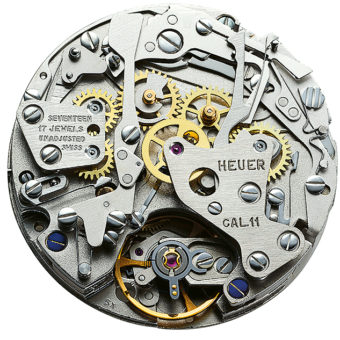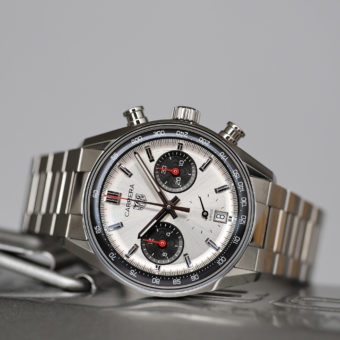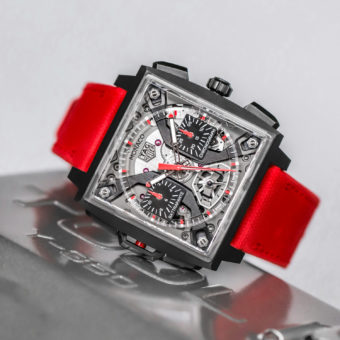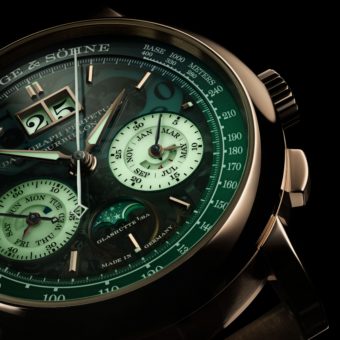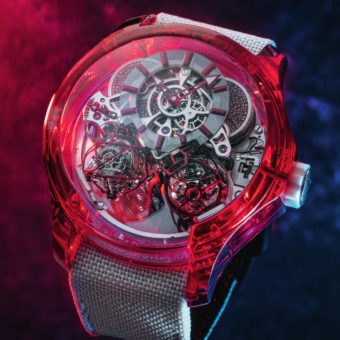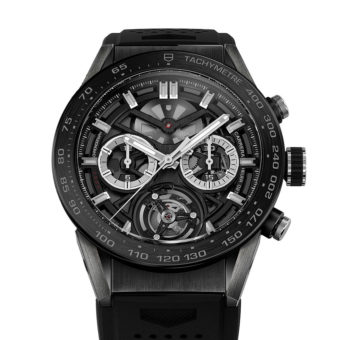During LVMH’s Geneva Days showcase earlier this month, TAG Heuer launched the Carrera Calibre Heuer 02T Tourbillon Nanograph which features the distinction of being the world’s first production timepiece to utilize a hairspring constructed of carbon. This announcement is notable for a number of reasons. For TAG Heuer, it’s the result of four years of development and will impact its entire identity as the technology makes its way across the brand’s product lines. For the rest of the industry, it’s significant simply due to it being an alternative to the usage of silicon.
We recently had the opportunity to sit down with Guy Bove, formerly of IWC and Breitling and the newly appointed Product Director of TAG Heuer, who gave us the low down on how the new development will impact TAG Heuer going forward and how his first few months with the brand are going so far.
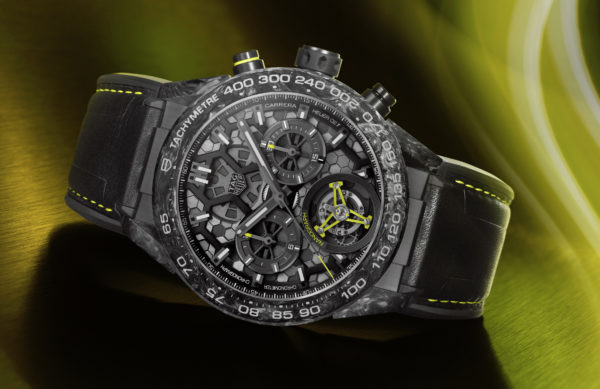
WatchTime: You’ve worked for many different brands in the watch industry. How have your previous positions prepared you for your current role as Product Director for TAG Heuer?
Guy Bove: All the brands I’ve worked for as creative director or product director in the past, I’ve also been the lead designer. In that sense, I’m coming to the position with a different eye than someone who might be going by figures or by methodical practices. I’m coming at it with a product designer’s eye and an art director’s eye.
WT: What attracted you to TAG Heuer?
GB: In 1989, when I was looking for my first real watch, I saw a [TAG Heuer] ad with a huge whale and a tiny diver next to it. I thought, “If it’s good enough for this diver then it’s going to be just fine for me.” That’s what initially attracted me to TAG Heuer. It was a Professional 200.
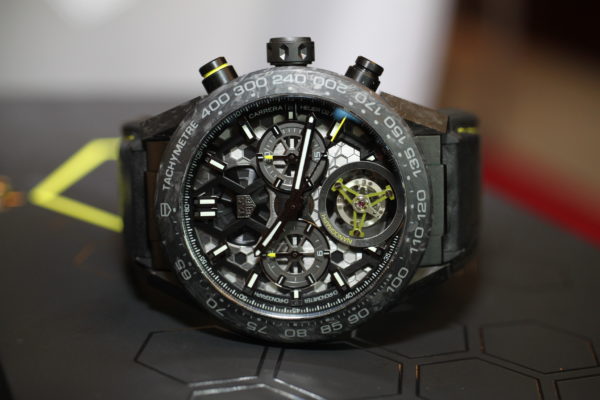
WT: From my understanding, you’ve never worked in the smartwatch arena during your career. And TAG Heuer has a successful line of smartwatches with the Connected. How do you feel, in general, about smartwatch technology and are you looking forward to working with it?
GB: I love interface design, first of all. And if you look at a TAG Heuer, or if you look at Heuer actually, the first more or less 100 years, Heuer was making timing mechanisms. Stopwatches and car dashboards. They’d always had wristwatches, you know, from early on, but they were sports watches and tool watches. For me, the Connected watch is a logical extension to that. It’s today’s tool watch. That’s how I see it.
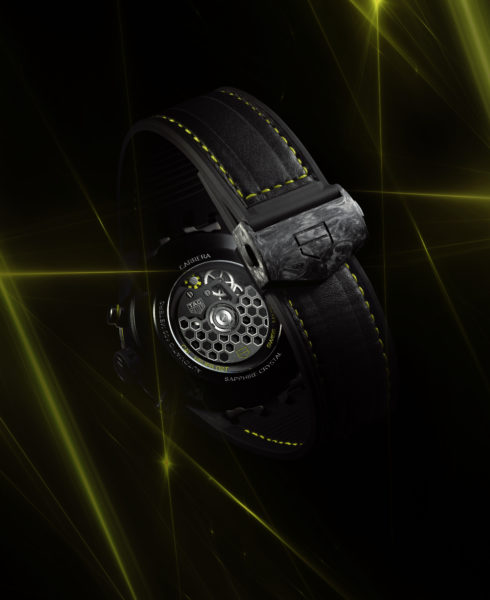
WT: Jean-Claude Biver stepped down from his day-to-day role at LVMH in September of last year and you joined TAG Heuer in November. Have you been able to spend much time with Mr. Biver?
GB: I spent some time with him. Not very much time. But I met with him before I started to see what his perception was. Where he thought we needed to grow or to change things. We had a nice chat and were very aligned. In the past, I’ve actually worked on some of his products.
WT: Let’s talk about the Carrera Calibre Heuer 02T Tourbillon Nanograph and its carbon hairspring.
GB: As far as I know, this is the only production watch in the world to have a carbon hairspring. What carbon solves is it’s antimagnetic, shockproof, and very light. So gravity doesn’t have very much effect on it. When and if you get shocked, it won’t bend or shatter. It basically solves, in a regular movement, it solves most of the problem of timing. Cause if you just have a wall clock, a pendulum is very accurate. Once you move it to the wrist, you have things like positions, vibrations, shocks, and temperature changes. With this hairspring, we can very closely align the hairspring with the balance wheel.
Carbon is three and a half times lighter than silicium. It’s a very detailed design where even one micron in thickness in the balance will affect the time so we have to work on a submicron level. We use a chemical vapor deposition machine to attract carbon out of the atmosphere at a precise temperature onto a platter. And it’s only depositing where the unmasked parts are in the silicone. The carbon is being attracted to those and growing a nanotube structure naturally. Which is why we have a hexagonal graphic on the dial to represent them because you can’t see it.
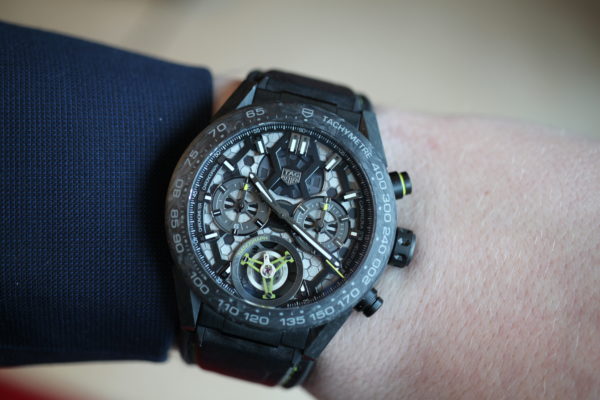
So they’re just flinging together in this light as work, giving you the exact design of the spiral. Then we change the composition of the arrow and heat it to a high temperature, at which point the carbon atoms start getting excited, and the free electrons start grabbing onto whatever they can in the air, which is only carbon. So more free carbon is coming in and filling in the latticework. Then we have a solid mass of carbon that we cool down and end up with the carbon hairspring. We’re not holding it together with a boxy resin or anything. It’s a pure carbon spiral. It’s graphite at that point.
We also know how to calculate the spring for any given balance, meaning we can even take purchased movements and introduce the most vital component to it. So whether it’s our own movement or a purchased movement, as long as it uses a balance wheel, we can improve it. I would say what’s most interesting is that it really gives us a better hairspring. There aren’t very many manufacturers who make their own hairsprings.
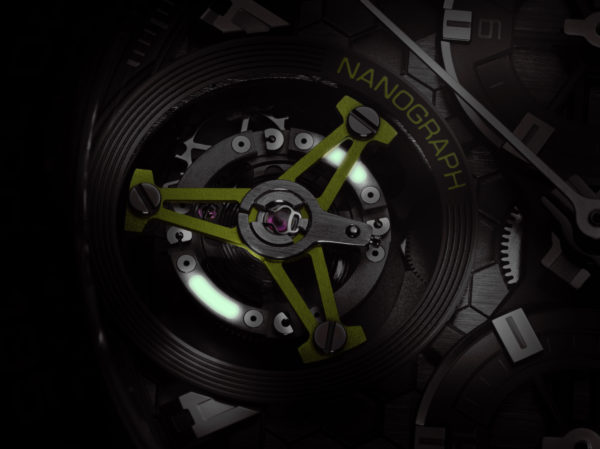
WT: Will we be seeing carbon hairsprings applied throughout all the TAG Heuer lines?
GB: You’ll see it trickling down.
WT: Is there a timeline for that? Will it happen over the next few years or so?
GB: You’ll find out at the end of March.
The TAG Heuer Carrera Calibre Heuer 02T Tourbillon Nanograph is a non-limited release and is priced at $25,000.

